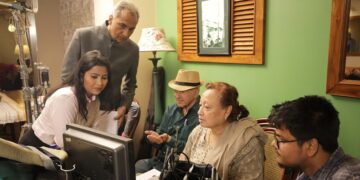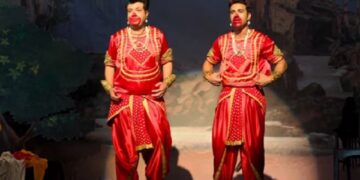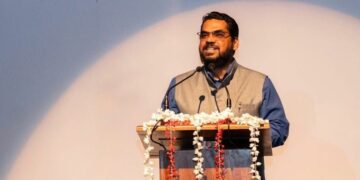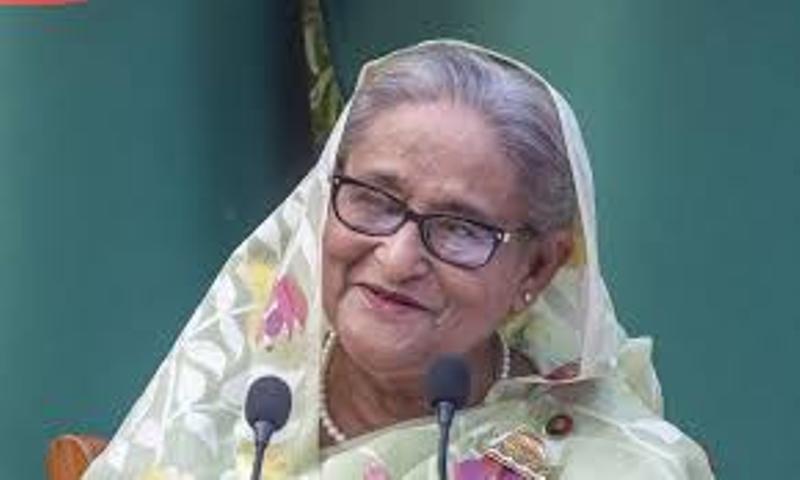Conspiracy engineered at home and abroad led to the collapse of the Bangladesh government headed by Prime Minister Sheikh Hasina in August 2024. In the nearly fourteen months which have since gone by, the People’s Republic of Bangladesh has been under systematic assault by those who seized power unconstitutionally in the aftermath of the Prime Minister’s departure for India. Bangladesh’s heritage, culture and history are today hostage in the hands of forces opposed to the values which sustained the country all the way from the struggle for autonomy in the 1960s to the War of Liberation of 1971 and on to the period of strong and purposeful leadership provided by Sheikh Hasina in the governance of the country.
The struggle for a resurgence of the Spirit of 1971 goes on. That Bangladesh, with its democratic, secular, socialistic and nationalist foundational principles, will be restored to its place in the sun is the dream and the firm belief of the Bengali nation.
The following article is an analysis of the leadership which raised Bangladesh’s profile in the world through the purposeful, goals-oriented leadership of Prime Minister Sheikh Hasina.
For Sheikh Hasina, it is the spirit of Bengali nationalism which has consistently informed her politics. Her links with the people were a reminder of the myriad ways in which Bangabandhu Sheikh Mujibur Rahman related to his people.
As head of government, Sheikh Hasina provided, through a government scheme, regular financial allowances to poor widows and women abandoned by their husbands.
Her concept of Asrayan, the project through which the government ensured housing for the destitute, homes that were to be theirs for good, remains a step unprecedented in the country.
That is the essence of Sheikh Hasina’s leadership of the People’s Republic of Bangladesh. That is what guarantees her a place in history.
In the fifty-four-year independent history of the People’s Republic of Bangladesh, Sheikh Hasina has turned out to be one of the two most formidable of politicians — the other being the Father of the Nation Bangabandhu Sheikh Mujibur Rahman — to have presided over the fortunes of this country.
There are, of course, all those areas where you might not quite agree with her, for all the right reasons.
But, on a very broad scale, you cannot but agree that the issues she handled after she first assumed office as Prime Minister in 1996 and then again in 2009 have been those that would test the resolve and resilience of any other politician.
And there is something else. Where other politicians and the nation’s two military rulers have been instrumental in creating problems, most of them seemingly insurmountable, Sheikh Hasina proved to be a problem solver.
Her leadership has been firm, uncompromising and focused. You can be quite sure that she has earned her place in the pantheon of history.
And this is how she has done that.
Two of her earliest difficulties were the Ganges Waters dispute with India and the long-running insurgency in the Chittagong Hill Tracts.
But these were also the impediments she tided over in her first administration, through deft negotiations with both the Indian leadership of the time as well as the PCJSS in the CHT.
The Ganges treaty, initialled by Sheikh Hasina and Indian Prime Minister HD Deve Gowda, brought a critical situation to an end that was satisfactory for both Dhaka and Delhi.
In the matter of the CHT accord, there are yet a good number of hiccups and a good deal more needs to be done to reassure the indigenous community about its well-being within the political system of the country.
And yet what remains a matter of relief is the fact that the CHT deal brought an armed conflict in the hills to an end.
It remains an essential component of national history that Sheikh Hasina, in power, was destined to do all those positive things democracy expects to be done.
She came to office in 1996 against a background of all the evil that had been perpetrated in the twenty-one years in which her party, the Awami League, was kept out of power.
In that shadow lurked the notorious Indemnity Ordinance, first imposed on the country by Khondokar Moshtaque to prevent any prosecution of the assassins of the Father of the Nation, Bangabandhu Sheikh Mujibur Rahman, and his family, and then insinuated into the Constitution through the Fifth Amendment by the regime of the country’s first military ruler General Ziaur Rahman.
Sheikh Hasina responded to the national urge — and it was a loud urge — for the ordinance to be lifted and for the assassins to be put on trial.
Hers was an act of courage, seeing that not many at the time thought the murderers could be brought to justice. Besides, her government did not have a clear majority in Parliament but was in office through a coalition-building of sorts.
It goes to the discredit of General Ziaur Rahman, General Hussein Muhammad Ershad and Begum Khaleda Zia that they not only did not bring the August 1975 assassins to justice but also, to our collective embarrassment, clearly condoned their criminality.
It is a matter of happiness, indeed of pride, that as the daughter of the nation’s founding father, as the nation’s elected leader, Sheikh Hasina went ahead in the task of placing the assassins on trial and seeing the court send them to the gallows.
It was the lifting of a huge burden off the back of the nation.
And that was not all.
In the years after she led her party back to power at the December 2008 elections, Sheikh Hasina was instrumental in pushing back all the wrongs perpetrated on the nation by those who came before her.
Her courage in the face of danger — danger as exemplified by the move to do her in at Chittagong in the Ershad years, by the violent attack on her party rally in 2004, by the muddle-headed attempt of the 2007-2009 caretaker government to prevent her from returning home from abroad — consistently added substance to her leadership, to her style of governance.
Sheikh Hasina and her government brought to a decisive end the activities of Indian insurgents involved in planning and launching assaults against the Indian government from their safe havens in Bangladesh.
The country, long treated as a launching pad for violence by such organizations as ULFA and Pakistan’s ISI, violence patronized by politicians and ruling cliques whose anti-India posture was only too visible, became a safer place under Sheikh Hasina.
More significantly, Sheikh Hasina’s leadership has been defined by a readiness and a resolve to set history right against a background of all the distortions that crept into it in the non-Awami League years in the country.
If Bangabandhu did not get the time and the opportunity to bring the war criminals of 1971 to justice, Sheikh Hasina made sure she had both. Her return to power in January 2009 was predicated on her promise to bring the war criminals to trial. She redeemed that pledge.
On the economy, the Awami League government did remarkably well. The growth rate was consistent, at seven per cent or above. Agriculture remained steady, with the capable Motia Chowdhury and then Dr Abdur Razzaque in charge. In diplomacy, Sheikh Hasina’s leadership placed Bangladesh in a position where the country worked on a well-defined foreign policy with such influential nations as the United States, Russia, China and India.
For all her abiding interest in shaping and implementing a purposeful, independent foreign policy, Sheikh Hasina was clear about her need to hold her own when it came to foreign nations’ worries about her government’s actions.
She tackled the World Bank, in relation to the Padma Bridge, on her own terms. She heard overseas leaders out on such issues as the war crimes trials and then went ahead with pronouncing her own judgment on them.
The national interest, in the Prime Minister’s scheme of things, was a pivotal underpinning of policy. That was one reason why her determination that the country must maintain constitutional continuity was translated into action.
Neither her critics at home nor her fellow politicians abroad were given space where upholding political order in Bangladesh was concerned. Bangladesh knew best what was good for it.
That was the firm message going from the Prime Minister to the world out there. And Bangladesh between 2009 and 2024 was poised to go from LDC status to middle income country status. No mean feat, that.
One of the fundamentals on which Sheikh Hasina exercised power, between 1996 and 2001 and again from 2009 to 2024, was the realism she brought into her politics.
And, yes, she was the pre-eminent force in national politics, a head of government who was more than primus inter pares — first among equals.
It is a truth not to be denied, for the government was shaped around her personality in much the same way it was focused on Bangabandhu in an earlier era.
ALSO READ: History: When Bangladesh entered the UN
Where Bangabandhu’s onerous task was leading the nation to freedom and then mapping the path it would take to its future, Sheikh Hasina’s burden was one of wiping the canvas clean of the waste and the dirt and the detritus left behind by her predecessors, those who seized power through force of arms or pushed the country back into darkness for altogether twenty-six years.
Grit and determination have consistently been her armour. Hers was leadership from the front.
(Sheikh Hasina — eldest child of Bangabandhu Sheikh Mujibur Rahman and Begum Fazilatunnessa Mujib and Prime Minister of the People’s Republic of Bangladesh in 1996-2001 and 2009-2024 — was born on 28 September 1947).















